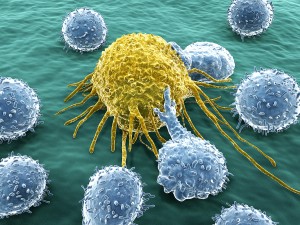Recently two publications caught my eye. They were dealing with vitamin D3 and its anti-inflammatory actions.
1. In the July 2015 issue of Cancer Prevention Research Catherine Duggan, PhD, the lead author reported that inflammatory cytokines can be reduced by either weight loss and/or taking 2000 IU of vitamin D3 daily. 218 postmenopausal women with a body mass index of more than 25.0 and a low initial serum 25-hydroxyvitamin D level (less than 32 ng/mL) were randomized to group A consisting of a weight loss program plus 2000 IU of vitamin D3 daily or group B with a weight loss program and a placebo pill (no vitamin D3). The trial lasted for one year. At the end the women from group B on placebo pills who had lost 5% to 10% of their initial weight through the weight loss program had experienced a 17.2% decrease of the initial interleukin-6 level. The other arm of the trial, group A, were women who were on vitamin D3 and who also had lost 5% to 10% of body weight. After 1 year they had a 37.3% reduction of the initial interleukin level.
What this trial showed is that weight loss by itself reduces inflammatory kinins such as interleukin-6, but when vitamin D3 is taken as well this anti-inflammatory response is even greater. Dr. Duggan has pointed out that chronic inflammation is cancer producing, so weight loss is one way to reduce this risk. But taking vitamin D3 to the point where the blood level reaches recommended values (see below) is yet another tool to reduce the cancer risk.
2. The second publication from July 4, 2015 was 16-week randomized, double-blind, and placebo-controlled clinical trial where blood levels of various vitamin D3 doses were tested in 70 overweight/obese African Americans.
They were mostly women (84%) with an age distribution of 13 to 45 years. The initial 25-hydroxyvitamin D levels were 20 ng/mL or less. The trial participants were randomized into 4 groups: placebo pills, 600 IU of vitamin D3 daily, 2,000 IU daily or 4,000 IU daily. This regimen was pursued for 16 weeks.
The results showed that only the higher doses of 2,000 IU and 4,000 IU vitamin D3 brought the serum vitamin D levels up to 30 nano-grams/mL or more. The 600 IU dosage did not bring the vitamin D level to above 30 ng/mL.
Conclusion
Life Extension was one of the first companies to recommend that the optimal level for vitamin D3 should be in the range of 50-80 ng/mL (using the serum 25-hydroxyvitamin D method). Many research papers recommend the same range. Previously recommended doses of 400 IU or 600 IU were sadly inadequate. Levels of 4,000 IU per day are needed for most people, including black people, to achieve effective vitamin D3 levels. Some people are poor absorbers and might need 10,000 IU per day or more, depending on blood level determinations as described. You cannot expect anti-inflammatory action of vitamin D3, if the serum levels are not high enough. The same is true for cancer prevention. This can only be achieved with adequate levels of vitamin D3. It has to be added that cancer prevention is multi-faceted. Many lifestyle factors play a role. They are all like players in a team. Vitamin D3 is one that has been overlooked in the past, but as the research shows, it is important!
More info about cancer in general: https://nethealthbook.com/cancer-overview/overview/







